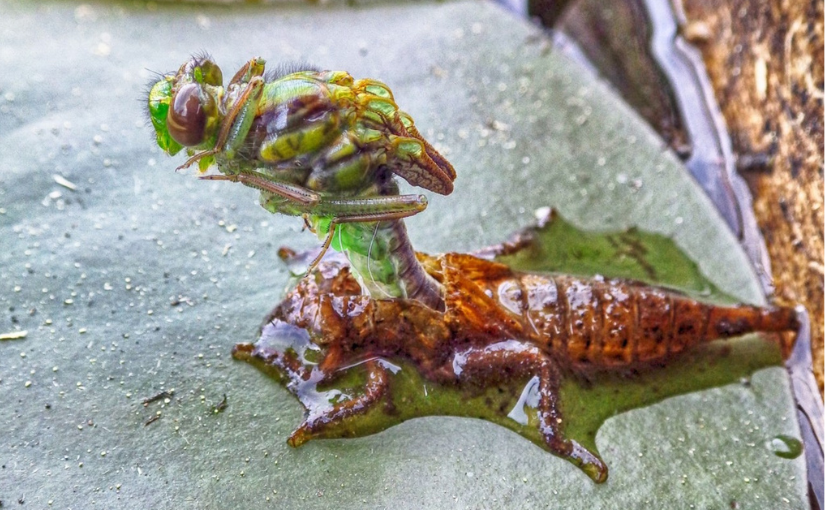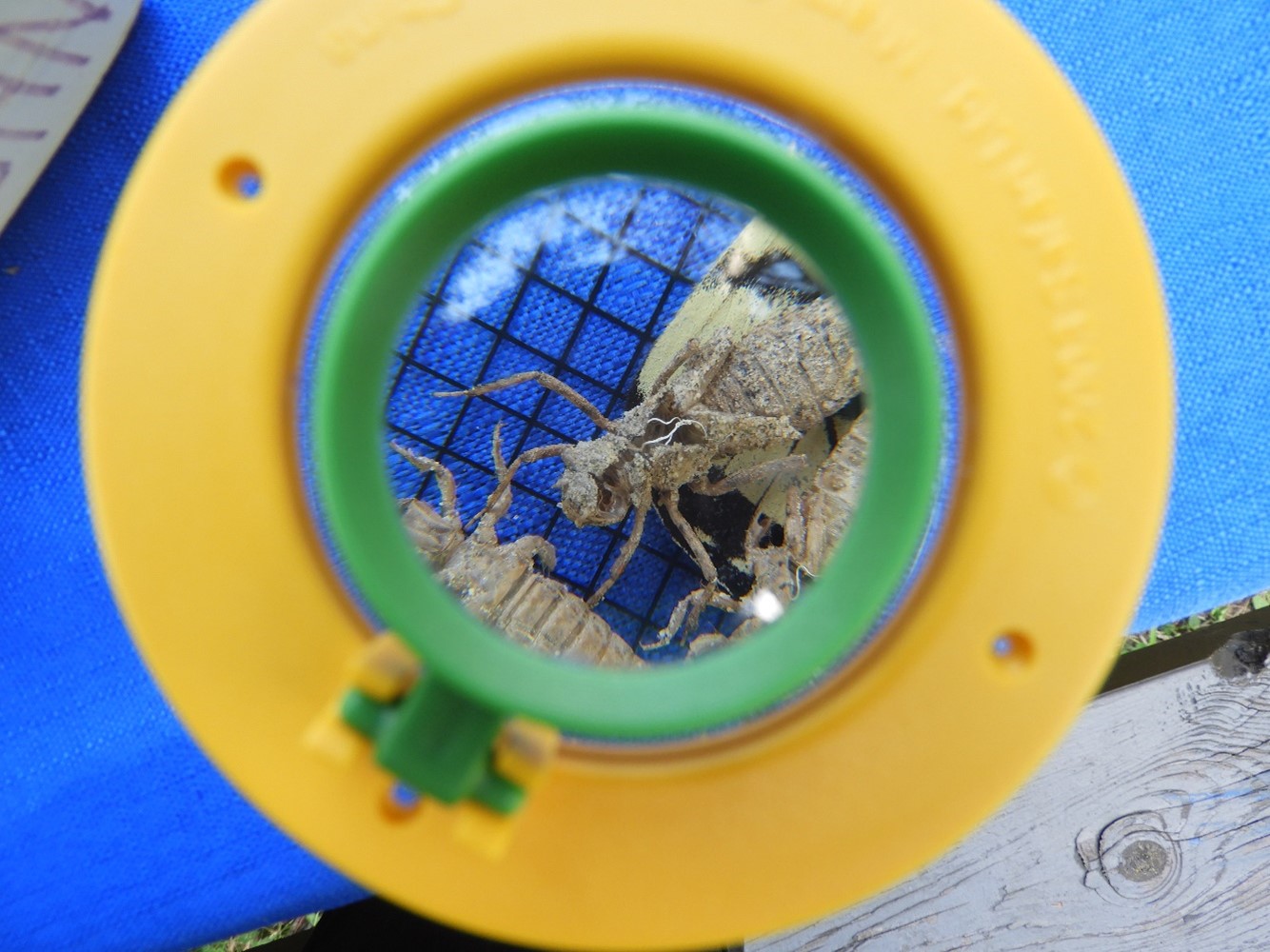Today’s blog came from Hope Freeman, Discovery leader at Grundy Lake Provincial Park.
Gather round. I’ve got a creature of the night that is sure to make the hair on the back of your neck stand up…just in time for spooky season.
Picture this: you’re lakeside, with the sun just setting on the horizon. You catch a glimpse of something lurking in the shallow, weedy water below.
A drab aquatic insect appears with six long, jointed legs, each equipped with two claws.
Two large eyes and a jaw that covers most of the bottom part of the head…seemingly peering back at you.
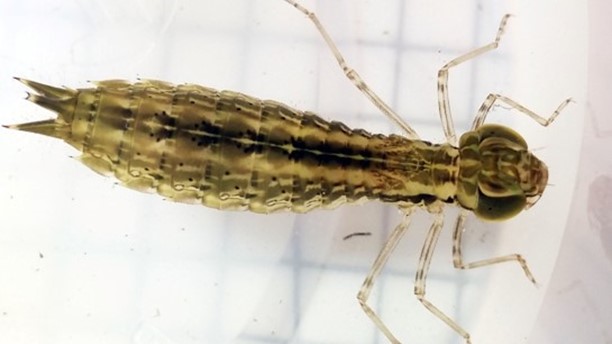
“This thing is downright freaky,” you think to yourself. “What is this alien-like aquatic insect?”
As if the Discovery ranger could read your mind, they approach and ask, “What’s caught your attention?”
You learn…
…it’s a dragonfly nymph.
Demystifying dragonflies
All right. Before we begin, I’ve got to be honest. This creature is not actually a night flyer, but it does have qualities that make it the perfect candidate for a spooky Halloween creature feature!
Dragonflies and damselflies make up an ancient order of insects called Odonata, a group that developed from ancestors originating at least 300 million years ago.
Current-day Odonata have changed relatively little in body design from those in the fossil record – a testament to what is obviously a successful design!
Dragonflies spend most of their lives in the water as nymphs (or babies) growing and developing their wings. Dragonflies are extremely successful, agile hunters on land as adults and in the water as nymphs.

Nymphs have a long, hinged arm mouthpart called the labium that they keep folded under their head. The labium is a tool of aquatic larval destruction. It shoots out, catches the unassuming prey, and drags it back into the nymph’s mouth…
…remind you of any sci-fi movies?
Gross or fascinating?
Sticking on the sci-fi trend, nymphs practically shapeshift.
When they are ready to undergo (incomplete) metamorphosis (i.e., changing form from nymph to adult) they climb out of the water and begin their shapeshifting journey.
The head, thorax, and legs are the first to break through the larval skin.
After their legs have time to harden, the abdomen breaches too.
Finally, the wings and abdomen expand and harden into its new form: an adult dragonfly leaving behind an exuvia or cast of larval skin.
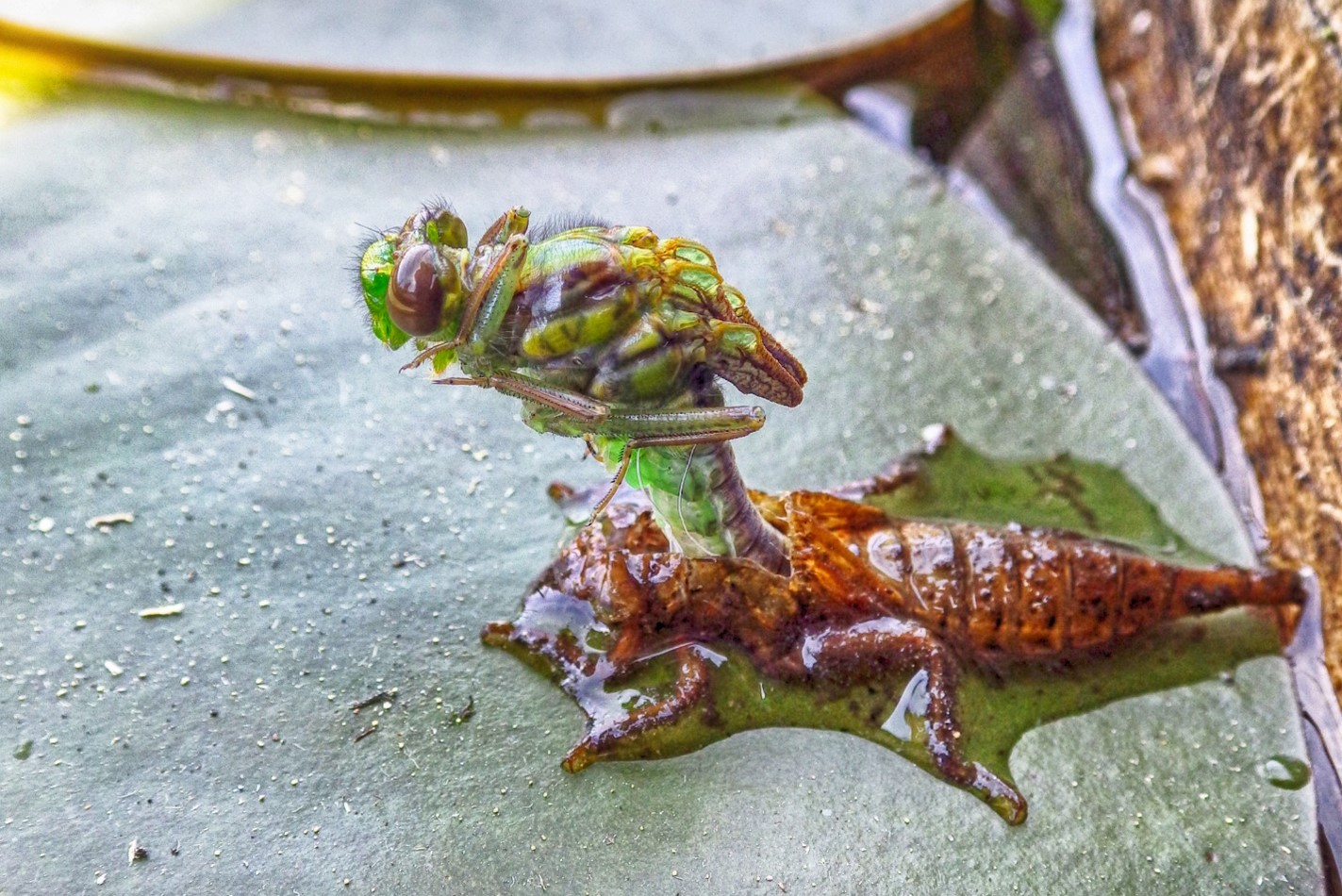
Feeling spooked yet?
If a dragonfly’s hinged pincer jaw and skin-splitting shapeshifting abilities hasn’t creeped you out, maybe their cannibalistic tendencies will.
Being the prehistoric predator that they are, dragonflies will not think twice about participating in cannibalism, viciously ripping and devouring the heads off neighbouring dragonflies.
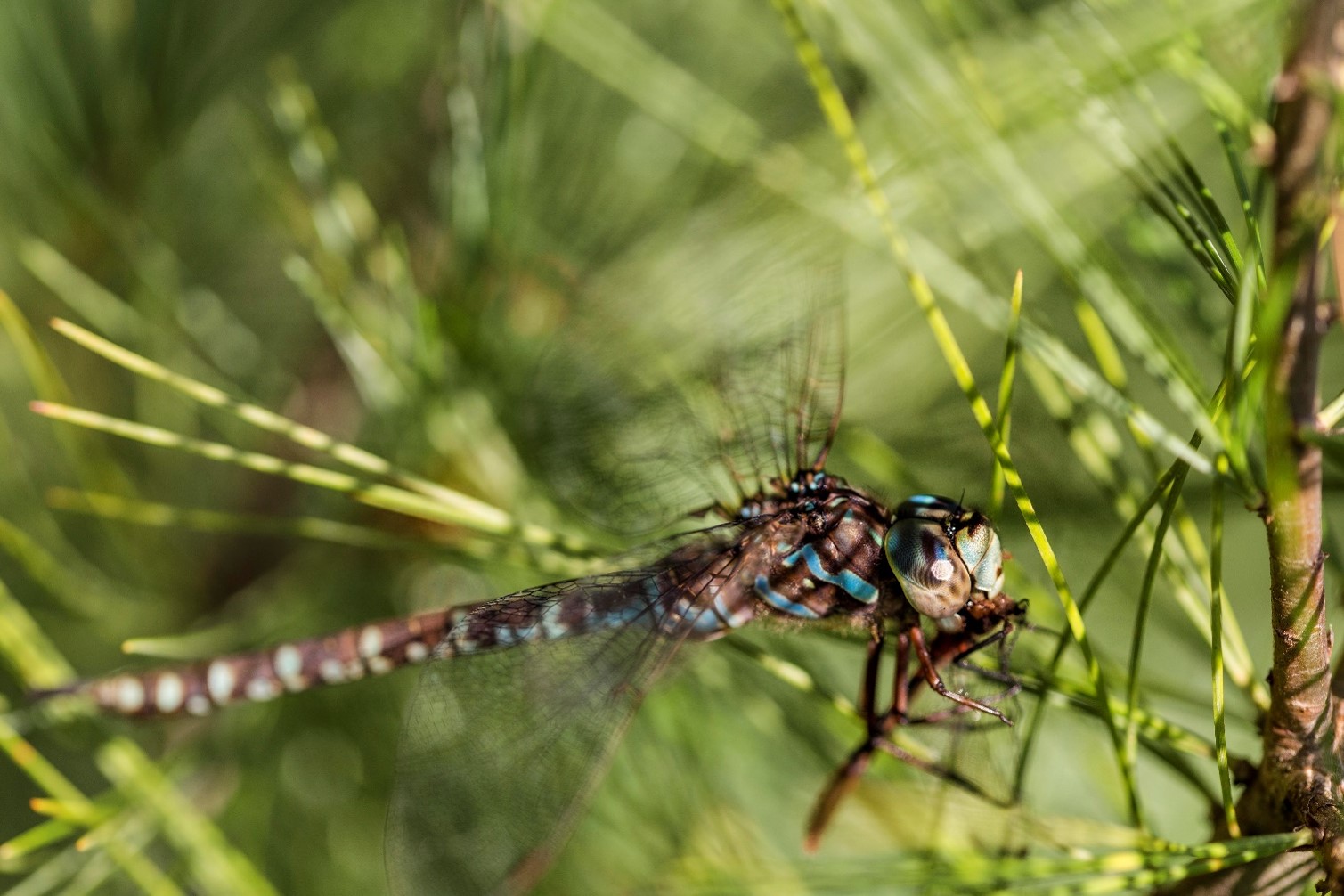
In fact, dragonfly nymphs are known to eat one another when resources (food, shelter, space) are limited.
Bone-chilling in broad daylight
Now as I admitted, dragonflies aren’t creatures of the night.
Like other insects, dragonflies are most active during the hottest part of the day, but not all creepy creatures roam at night.
Although these traits may make dragonflies sound creepy, they are incredibly important members of a healthy ecosystem.
Plus, when a dragonfly saves you from a pesky Deer Fly, you can’t help but appreciate them!
